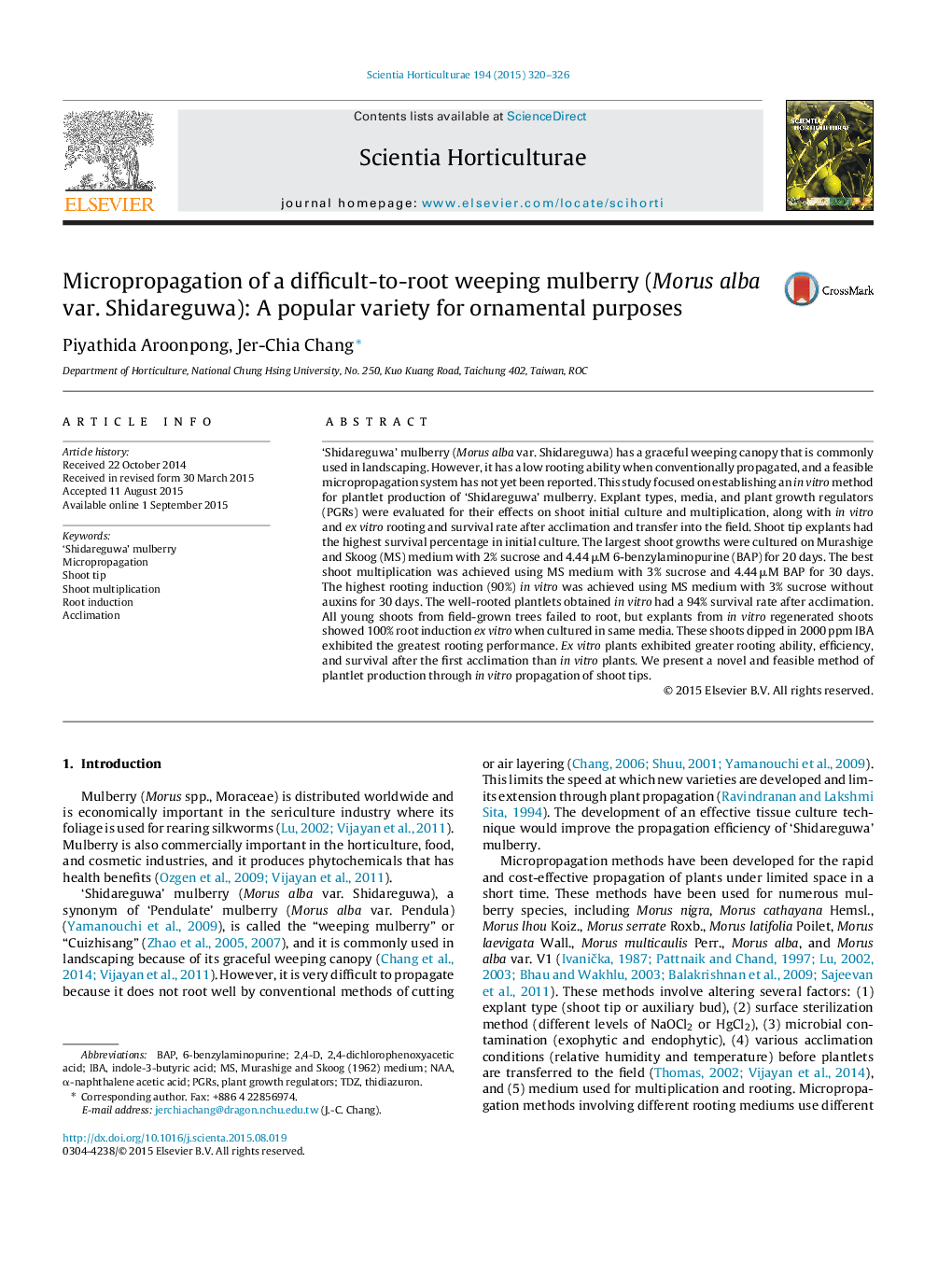| کد مقاله | کد نشریه | سال انتشار | مقاله انگلیسی | نسخه تمام متن |
|---|---|---|---|---|
| 4566348 | 1628804 | 2015 | 7 صفحه PDF | دانلود رایگان |

• Novel and efficient plantlet production using shoot tips for micropropagation of ‘Shidareguwa’ mulberry.
• High root induction from in vitro regenerated shoots cultured without plant growth regulators.
• Much higher root induction from ex vitro regenerated shoots than from young shoots from field-grown plants.
• Increased rooting ability, efficiency, and survival of ex vitro than in vitro rooted plantlets after the first acclimation.
• No survival rate difference between in vitro and ex vitro rooting plantlets in the field.
‘Shidareguwa’ mulberry (Morus alba var. Shidareguwa) has a graceful weeping canopy that is commonly used in landscaping. However, it has a low rooting ability when conventionally propagated, and a feasible micropropagation system has not yet been reported. This study focused on establishing an in vitro method for plantlet production of ‘Shidareguwa’ mulberry. Explant types, media, and plant growth regulators (PGRs) were evaluated for their effects on shoot initial culture and multiplication, along with in vitro and ex vitro rooting and survival rate after acclimation and transfer into the field. Shoot tip explants had the highest survival percentage in initial culture. The largest shoot growths were cultured on Murashige and Skoog (MS) medium with 2% sucrose and 4.44 μM 6-benzylaminopurine (BAP) for 20 days. The best shoot multiplication was achieved using MS medium with 3% sucrose and 4.44 μM BAP for 30 days. The highest rooting induction (90%) in vitro was achieved using MS medium with 3% sucrose without auxins for 30 days. The well-rooted plantlets obtained in vitro had a 94% survival rate after acclimation. All young shoots from field-grown trees failed to root, but explants from in vitro regenerated shoots showed 100% root induction ex vitro when cultured in same media. These shoots dipped in 2000 ppm IBA exhibited the greatest rooting performance. Ex vitro plants exhibited greater rooting ability, efficiency, and survival after the first acclimation than in vitro plants. We present a novel and feasible method of plantlet production through in vitro propagation of shoot tips.
Journal: Scientia Horticulturae - Volume 194, 14 October 2015, Pages 320–326